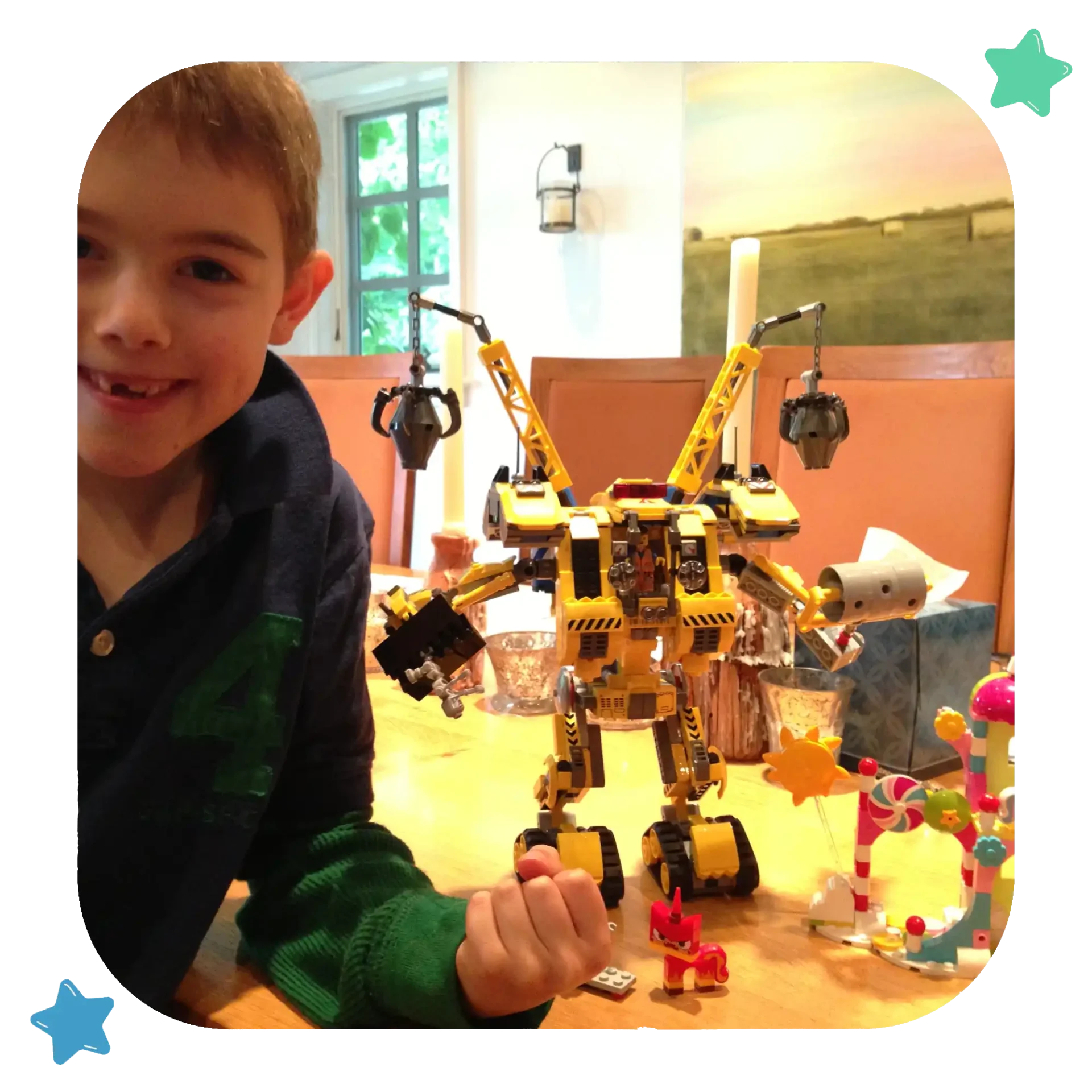
English
Español
Hi, I'm Cam Greenberg
Ever since I was young I have had a love for architecture and design. Legos have always been my favorite toy, as they allow me to express myself creatively, build structures from scratch, and bring my ideas to life. Diagnosed with dyslexia at an early age, Legos have also helped me to strengthen my spatial skills and build confidence. I was inspired to share my love of Legos with other kids, so I helped to bring our program to families of Puerto Rico. It is awesome to see friendships grow and personalities shine as we work together to build something great.

English
Español
Legos Are Relaxing!
Research has suggested that playing with Lego blocks can have therapeutic benefits for children. Here are some ways in which Legos can be therapeutic for children:
Promotes relaxation and reduces anxiety:
Building with Lego blocks can be a relaxing and calming activity for children. It can help them focus their attention on the task at hand and distract them from any worries or stress they may be feeling.
Encourages creativity:
Lego blocks are an open-ended toy, meaning that there are countless ways to build and create with them. This can encourage children to use their imagination and creativity, which can be a great way to express themselves and relieve stress.
Improves fine motor skills:
Building with Lego blocks requires children to use their hands and fingers in precise ways, which can help develop their fine motor skills. This can be particularly beneficial for children with motor skill difficulties.
Develops problem-solving skills:
Building with Lego blocks requires children to think critically and solve problems, such as how to make their creation stable or how to connect different pieces together. This can help develop their problem-solving skills and improve their ability to think logically.
Enhances social skills:
Lego blocks can be a great tool for encouraging social interaction and teamwork. Children can work together to build something or share their creations with each other, which can help them develop social skills such as communication and collaboration.

English
Español
Legos are Educational!
There are many ways in which playing with Legos can be educational, and research has documented several of these benefits. Here are some examples:
Develops creativity:
Playing with Legos allows children to explore their creativity and imagination by building and designing their own creations. Research has shown that this type of open-ended play can enhance a child's creativity and problem-solving skills.
Improves spatial awareness:
Building with Legos can help children develop their spatial awareness and visualization skills. They learn to think in three dimensions and visualize how objects fit together, which is an important skill for future endeavors in fields such as architecture, engineering, and design.
Enhances fine motor skills:
Building with Legos requires children to use their fine motor skills, such as hand-eye coordination and manual dexterity. This type of play can help them develop and refine these skills, which can be useful for a wide range of activities throughout their lives.
Boosts math skills:
Playing with Legos can also help children improve their math skills. As they build structures, they learn about concepts such as symmetry, geometry, and measurement. This type of play can help make math more tangible and engaging for children.
Encourages teamwork:
Legos can also be used as a tool for group play and collaboration. Working together to build structures can help children learn how to communicate, cooperate, and share ideas with others.